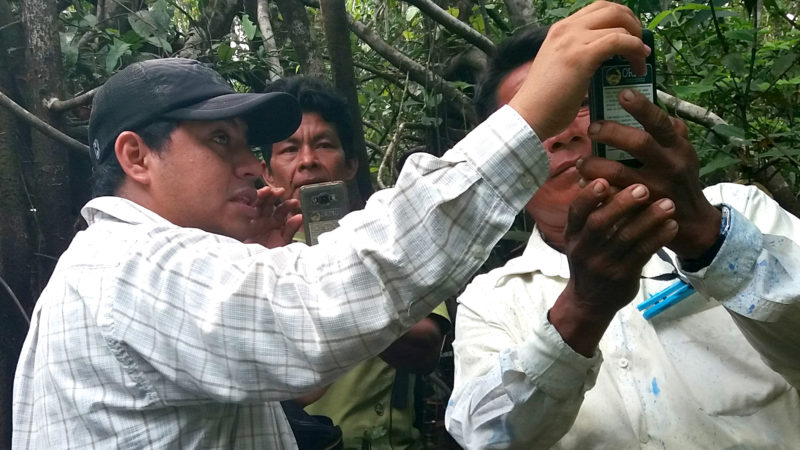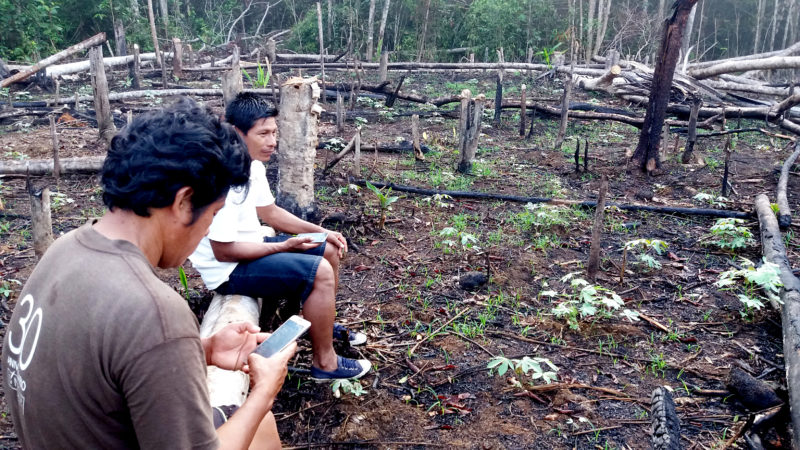Could Indigenous Communities Save the Amazon?
A peer-reviewed study confirms tech-enabled rainforest protection works: Now let's scale it up.

Just the gist
If you're in a hurry, here's what you need to know this month:
🛰️ The project just published a peer-reviewed paper, demonstrating that tech enabled rainforest protection reduces deforestation by over 50% compared to other methods. These findings are the latest in a flurry of studies showing that indigenous peoples preserve their rainforests in a consistent, reliable, and cost-effective way!
🤝 Until this program, deforestation alerts rarely filtered down to the remote rainforest communities affected most by forest destruction. But since the 2017 pilot, our project partner has worked to design an alert system that serves communities with limited internet and telecommunications infrastructure.
For more updates like this one, follow Wren on Twitter and Instagram.
It's a big month for the Tech Enabled Rainforest Protection project here at Wren: a landmark study demonstrating the project's effectiveness has just been published.
It shows that indigenous peoples, equipped with little more than smartphones, can be a powerful force in the battle against the Amazon’s destruction. In this project update we'll see just how powerful they can be.
The project helps indigenous communities reduce deforestation by over 50%

A peer-reviewed study, published in a special July issue of Proceedings of the National Academy of Sciences, found that communities supplied with satellite deforestation data via smartphones saw dramatically less forest loss than similar communities that did not adopt the technology.
In the two-year study, 36 communities were randomly selected to implement the Rainforest Alert methodology, our project partner's tech-based forest monitoring program.
Each community elected monitors who were trained to use smartphone-based satellite deforestation maps to patrol their territories against illegal logging. Another 37 communities, serving as a “control group” for comparison, did not adopt the new technology.
In the first year of the study alone, the territories monitored using the high-tech tools saw 52% less deforestation than the control group. In the second year of the study, data showed deforestation dropped by 21%.
Indigenous communities protect their rainforest home reliably and cost effectively

The findings are the latest in a flurry of studies showing that indigenous peoples preserve their rainforests in a consistent, reliable, and cost-effective way. More than 1/3 of the Amazon Basin falls within indigenous peoples’ territories, but from 2000 to 2015 only 17% of Amazon deforestation occurred there.
This study was designed to determine whether this association was coincidental or the direct result of active stewardship of rainforests by indigenous peoples. It confirmed the latter.
“Although formal recognition of indigenous peoples’ land tenure is key, it is most effective when combined with robust forest surveillance and strong local governance.” Suzanne Pelletier, Executive Director of RFUS.
Jorge Perez Rubio, the president of ORPIO says that “The study provides evidence that supporting indigenous tropical forest communities with the latest technology can reduce deforestation in our territories.”
Could this model save the Amazon?
Over the course of the two-year study, forest communities prevented the release of over 234,000 tons of carbon dioxide emissions at an average cost of about $5 per ton.
The findings of the study give a basis for determining how much of the Amazon’s 2 million square miles of rainforest might be saved if Tech Enabled Rainforest Protection is adopted by indigenous peoples throughout Amazonian Bolivia, Brazil, Colombia, Ecuador, French Guiana, Guyana, Peru, Suriname and Venezuela.
Geographers at Rainforest Foundation US estimate that the approach, implemented throughout similarly threatened regions of the Amazon Basin, could prevent as much as 4,400 square miles (more than 2.8 million acres) of deforestation over the next decade: a collective area one and a half times the size of Yellowstone National Park.
That saved forest would prevent nearly 100 million metric tons of carbon dioxide from entering the atmosphere each year, an environmental impact equal to taking more than 21 million cars off the road each year.
Over the course of the study, indigenous communities became more efficient at detecting and addressing deforestation, spotting twice as many illegal incursions into their territory. According to the researchers, “Increased detection is consistent with monitors learning about where deforestation is most likely to occur.”
It’s also consistent with what Wren and Rainforest Foundation US have always believed: that the indigenous peoples of the Amazon have a unique expertise, and that—equipped with state-of-the-art technology—they’ll defend their forests better than anyone else can.
That's it for this update! If you have questions or feedback, please reply directly to this email. I'll reply as soon as I can.
– the Wren team 🧡

